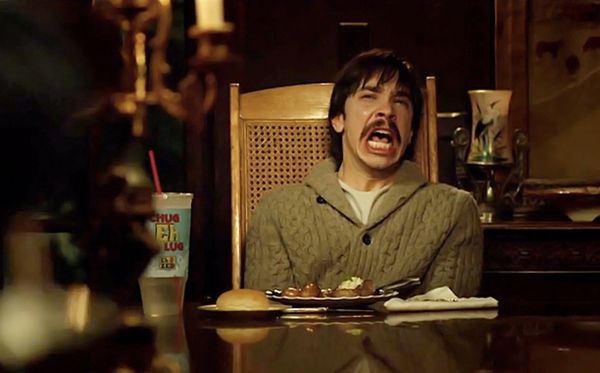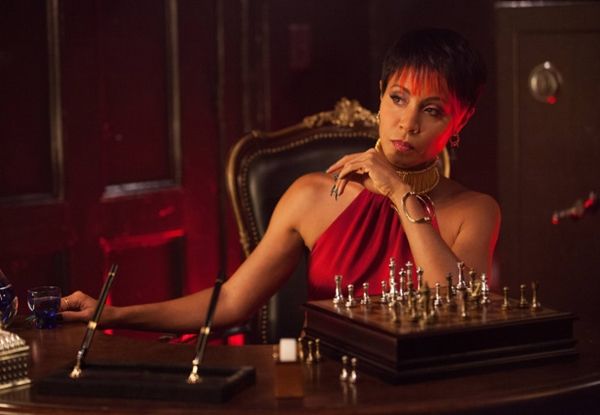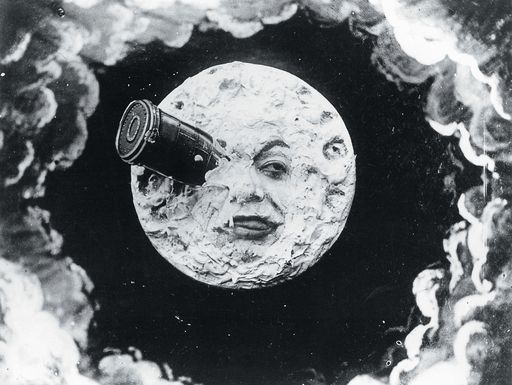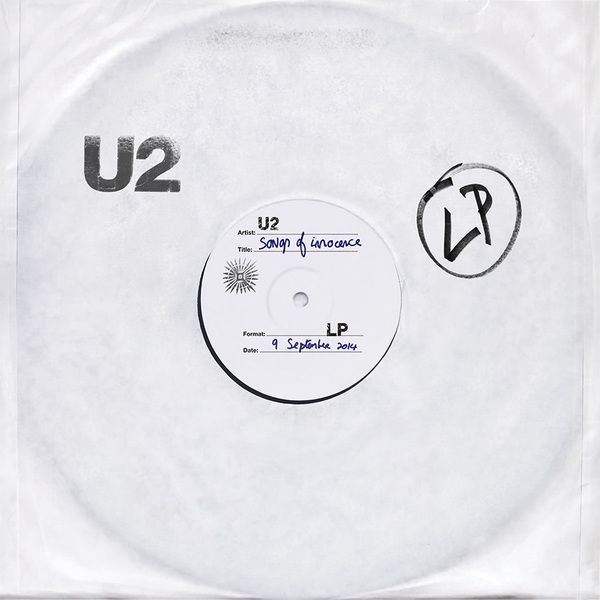Here we are, folks. The final week of sci-fi month. It’s been a great run with countdowns, shorts and blu-rays, and we’ve got a little more coming your way before switching gears for October (which yields both horror films and Comic Con, so this writer’s going to be a busy man indeed). This week we take a look at by far the most divisive indie film of the year (perhaps the most divisive film in a while), examine a new Blu-Ray that’s bound to be a classic, dive into the depths of Gotham and look at our final sci-fi short.

Movie: Kevin Smith. Kevin “the Clerks guy” Smith. Kevin “the critic hater” Smith. It’s tough to discuss a director who’s more known these days for his outbursts than his work. Bursting onto the indie scene in 1994 with the game changer Clerks (a film he made for $27,575, and would gross over $3 million), he became one of the “indie brats” of the late 80’s, early 90’s, bunched in with Quentin Tarantino, Robert Rodriguez, Spike Lee, Michael Moore and Richard Linklater as one of these young kids with a camera and a vision at a time where big-budget weariness had caused studios to snap them up and make deals in a flash. While Quentin rode Palme D’Or success from Pulp Fiction (released the same year as Clerks, both by Miramax) into Jackie Brown and Rodriguez was crafting a sequel to his $7,000 action flick to the tune of $7 million, Kevin Smith took a deal with Universal Studios to make a teen comedy.
Even though Spike Lee had years prior fought bitterly with Warner Bros. over his epic Malcolm X, Smith was really the first of the indie brats to step into the seemingly welcoming arms of the big studio system and makeMallrats, a raunchy 80’s throwback for the flannel age which received a harsh critical drubbing (deservedly so) and sent Smith back to Miramax with his head hung. Feeling that “Clerks was overrated and Mallrats was underrated”, his next feature would be a personal, confessional film entitled Chasing Amy and would prove to be not only a career launcher for Ben Affleck but would earn Smith his best reviews to date (and a Criterion edition of the film), and allowed him the freedom to make the religious comedy Dogma, the Hollywood satireJay and Silent Bob Strike Back and what would be his career killer, Jersey Girl, a quaint, average rom-com that suffered from Bennifer fatigue (this was post-Gigli at this point) and a dreadful female lead.
Smith quietly railed against the critics for the hit he took with Jersey Girl, and earned sympathy from his massive fan base and after-the-fact reviewers who realized the film was unfairly judged. After Judd Apatow took Smith’s talk-dirty schtick and removed the heart to make films like Knocked Up and Superbad, Smith became determined to reclaim his crown as comedy’s enfant terrible with Clerks II and Zack and Miri Make a Porno beginning a downward spiral into Cop Out, which received such hate-riddled reviews (and rightly so) that Smith swore to retire from filmmaking and that he would start charging critics to see his movies. It was revealed that he and Bruce Willis had several spats on set, spurred by Smith’s frequent marijuana use, a habit he picked up from Rogen that he feels “helps his creative process”.
Well, after a small critical comeback with the horror film Red State and building a media empire of podcasts and TV shows (including AMC’s Comic Book Men which, full disclosure, this writer appeared on), Smith decided to take another crack at the filmmaking game he’d swore to leave behind. His newest project was inspired by an article he’d read during a stoned podcasting session about a man wanting to sew another man into a walrus suit. Getting the film on track and casting acting great Michael Parks as the lonely fisherman, it appeared this project could either be a brilliant piece of weirdness or an absolute pot-fueled mess, with not an inch of wiggle room between.
Which was it? That truly depends on who you ask. Though the reviews were good out of Toronto, the audience seemed mixed, and has continued to be ever since. It’s undoubtedly the year’s most divisive film, and passionately so, and the issue of personal opinion is significant. There’s little way to write objectively on the subject, beyond stating that it’s a very bizarre film, very graphic and not at all for everyone. This writer and a fellow critic saw it within a day of each other, and while its of this author’s opinion that the film is a success, he swore it was one of the all time worst films he’d ever seen in his entire life (and this is a man who argues the artistic merit of a majority of the Halloween and Friday the 13th franchises). Now, perhaps our perceptions of the film, as many would be, are tainted by our perceptions of the man behind it.
This other critic, well before this film, had expressed his disdain for Smith as a director and has an open hatred for the later work of the actor who plays manhunter Guy LaPointe (whose identity, for the sake of avoiding spoilers, we shall keep a secret from our readers), so some could argue he’s biased. Then again, considering not only this author’s vantage point as somewhat a minuscule part of Smith’s media empire, as well as Chasing Amy being one of this author’s all-time top 5 films, one could argue there’s a bias here as well (though this critic’s dislike of Mallrats, Jay and Silent Bob, Clerks II, Zack and Miri and Cop Out make it a fairly even 5/11 divide of favor towards Smith). It’s hard not to have a bias with a filmmaker who’s as well known for his words as his work, and such a bias is likely to effect how one views a film as bold, bombastic and absurd as Tusk. So let the reader beware, this author can only truly offer his own take (and can redirect those inclined towards the opposite perception), so take such a review with as much or as little value as you choose to place upon it.
For this writer’s money, Tusk is a terrific experience. It’s reminiscent of They Live or the Japanese cult classicHouse. It’s a silly film, no doubt, but it’s sincere in it’s silliness. It doesn’t attempt to skewer or parody the horror genre. It doesn’t go for outright laughs. Like The Rocky Horror Picture show (whom it could easily join on the midnight movie circuit), Tuck just gets weird. Really, really weird. Michael Parks makes a masterwork of such a bizarre and quirky character as “Howard Howe”, a sad, lonely retired seaman seeking companionship, into whom Smith manages to infuse a tragic and true-life backstory that, if the film does nothing else, should shed light on a horrific part of Canada’s history. Justin Long and Haley Joel Osment do their part to move the film along, and Genesis Rodriguez takes what would otherwise be a minor role and commits to it with everything she’s got, selling it as seemingly no one else could (a surprising stand out is Smith’s daughter Harley Quinn, whose small part in the film is performed much better than one would expect from an amateur. It will be interesting to see how she does taking the lead in the film’s follow-up, Yoga Hosers). The story is admittedly strange, and goes all out, even putting Long in the ridiculously false-looking walrus flesh suit. It’s absurd both in its look and it’s cheesy 70’s zoom shooting, but that just adds to the fun of this quirky film.
It’s a mishmash of ideas, yes, including some that don’t work (an attempt at a Tarantino-like exchange between Parks and Guy LaPointe falls flat, despite Parks giving it his all, and the film tries to hide the blatantly obvious identity of Rodriguez’s “other man”, but infusions of Guy Madden-esque flashback sequences in tribute to it’s Northern setting and Coen Brothers style dialogue segments like an explanation of “Canando’s and Canadon’ts” are strange enough to keep this fascinating little curio on track. One couldn’t exactly expect high art from a plot involving a walrus suit (though some will suggest the film is indeed “high” art), but what one could expect, and one gets, is something unlike you’ve ever seen before. At it’s core, the film is an odd, abstract little affair, not Oscar worthy by any means, but for those who’ve grown weary of by-the-books fare like No Good Deed, A Most Wanted Man or the countless “guy with gun” crime films available in theaters today, Tusk is a breath of fresh air (typical of its distributor A24, who also brought us Under the Skin and Spring Breakers), a palate cleanser, and a reminder that films can break the mold. Whether you love it or hate it, it’s definitely good to know other options truly do exist beyond the sequels, reboots and knockoffs.
——

Upon it’s release, Edge of Tomorrow didn’t get its due. Despite acclaim, it lost out at the box office to The Fault In Our Stars, which captured the hearts of tweens and young adults everywhere. For everyone else,Edge of Tomorrow proved itself to be a thrilling, smartly written and brilliantly composed sci-fi thriller, in line with Minority Report and The Matrix. Or it would have proved that, if anyone had bothered to see it. Like John Carpenter’s The Thing before it, some cutesy, cloying crowd-pleaser bumped a brilliant sci-fi narrative out of the public eye, and hopefully (in spite of the inexplicable IMDB title change from Edge of Tomorrow to Live. Die. Repeat. and back) it too will find a new life and fan base on Blu-Ray.
This story of a recruitment agent sent out onto the battlefield of a human war against a strange alien species who, when he does, is sent back to relive the same day again, is equal parts action and comic relief, balancing Halo-like combat scenes and Groundhog Day humor brilliantly. Tom Cruise, like always, commits to the role with every fiber of his being, and plays well off of a stone cold Emily Blunt. The intricacies of the screenplay alone deserve special recognition, twisting and turning in ways even the most jaded viewer will be delighted by. It’s a must see, indeed a must own, and deserves the second life on Blu-Ray. Much like it’s protagonist, Edge of Tomorrow needs another shot at life to do what it couldn’t before.
——

TV: Anybody but the most ardent fanboy will admit that perhaps enough has been said about the billionaire playboy with the penchant for bats, so the prospect of Fox cashing in on the comic book craze wasn’t exactly a bright one. When it was announced it would be a prequel series, even more groans were evoked. Indeed, this critic had intended, after reviewing The Flash and Arrow ahead of premiere already, to avoid the comic book genre altogether for fear of avoiding other interests (though admittedly with Agents of S.H.I.E.L.D., The Flash, Arrow, Constantine, Gotham, Agent Carter and Daredevil all set to premiere this season, as well asTeen Titans, Supergirl, Luke Cage, Iron Fist and Jessica Jones also in development, avoiding the genre is proving to be difficult indeed). This author watched both the first two episodes of ABC’s Forever and the premiere of Selfie, intending to review one of those two (and those reviews will come in the following weeks), viewing Gotham only as a passing interest. Yet, after such a compelling, brooding and pulse-pounding premiere, the show quickly became a must-watch.
The show recognizes several of the issues of the Batman mythos and resolves them. Mainly, whether intentional or not, it acknowledges that Batman, as a character, isn’t nearly as interesting as his villains. Like almost every other take on Bob Kane’s creation, the show begins with the death of Thomas and Martha Wayne, but decides to stay there, not zip 20 years in the future. How it presents the death is new for the medium, treating it like the typical episode starting homicide and nothing more, reminding us that this isn’t a Bruce Wayne show, it’s a Jim Gordon procedural. The show takes opportunities to show us the beginning stages of iconic villains with varying degrees of success, as the stammering suck-up Penguin can be a bit grating, but the sparsely and therefor brilliantly used Edward Nigma (later The Riddler) as a forensic scientist with a penchant for puzzles works well.
At its core, though, is Jim, a good cop in a bad city, trying hard to get by without compromising his values. Doing so becomes a lot harder when his partner Bullock introduces him to crime middleman Fish Mooney, a woman who tries to impart on Gordon how things are meant to be run in the city. The production design is stellar, as it keeps Gotham more grounded than Tim Burton’s world, but much more stylized than the Nolan-ized grit. It’s Gotham noir, or DC-CSI, but the standard cop drama stories infused with the comic book world work wonders together, making for a show that plays like Dick Tracy meets The Wire. It’s a truly enjoyable drama, fun for even the anti-comic book crowd. Check it out Monday nights at 8pm/7pm central.
——

News: True Detective season 1 was a massive success, both in viewers (crashing the HBO Go website during its finale) and in capturing the public imagination (leading to Bill Hader asking Matthew McConaughey who the Yellow King was at the Independent Spirit Awards). Since its (some would say anticlimactic) finale, many have been wondering what mysteries would lie in the second season. Since the show is an anthology series, much like American Horror Story, the show will not feature one continuos narrative, but rather a new story and new characters each season. However, unlike the repertory cast of the former series, True Detective will feature all new actors in these new roles as well. Once the word got out that the show would feature one female lead, focus on the transportation system and be set in California, fans and journalists alike were chomping at the bit to know who was on board. Now a little bit of info has trickled out, and it involves a horrible boss and a swinger.
Yes, it’s been officially announced that Colin Farrell and Vince Vaughn are going to be in the cast of the mystery show’s second season, though their roles are unclear. Of course, Colin Farrell is best known as a dramatic actor, and his casting should come as no surprise, his versatility on display in both bawdy comedies (Horrible Bosses), intense drama (Alexander) and a dark mix of the two (In Bruges). Vaughn, however, will seem to many a surprise, known best for his frat pack endeavors like Dodgeball and Wedding Crashers. In fact, to most audiences, the most imposing or villainous Vaughn has ever been was as Ron Burgundy’s rival in Anchorman. Yet, don’t count him out just yet. True, his recent films have all been flops, but delve into Netflix in the coming weeks and you’ll see some stellar dramatic turns, both small (Wayne Westerberg in Into the Wild), large (Edward Baines in Tarsem Singh’s surreal The Cell) and extremely underrated (the only redeemable feature of Gus Van Sant’s painful remake of Psycho is Vaughn’s performance). Though it seems that the female role will be the lynchpin of the series, for now we can rest easy knowing that at least two of the roles have actors who are able to tackle anything.
——
Short Film: It felt only fitting to conclude Man of the Hour’s Sci-Fi month with the very first science fiction film. Created in 1902 by the first true master of cinema, George Melies, A Trip to the Moon (or Le Voyage dans la Lune) was an absolute game changer, and continues to be revered to this day, ranking as the 84th greatest film of the 20th century in The Village Voice and influencing everything from 1956’s Around the World in 80 Days and Martin Scorsese’s Hugo (which feature Melies as a character) to the memorable music video for Smashing Pumpkins “Tonight, Tonight”. It’s special effects were groundbreaking for it’s day, and it’s image of the rocket in the eye of the moon is perhaps the most iconic image in all of cinema. This was one of the earliest narrative films (before which there were but realistic documentations of weight-lifting, dancing and most scandalously a kiss), without which there would be no D.W. Griffith (who claimed to “owe everything” to Melies), and thusly virtually no cinema as we know it. The importance of the film is undeniable, yet there are plenty of important films that are practically unwatchable now, not aging well either from its poor production quality by today’s standards or (in the case of some of the aforementioned D.W. Griffith’s work) socially unacceptable depictions. So does A Trip to the Moon hold up?
The answer is: remarkably so. Melies films fair much better in the test of time because of their imagination and their ambition. They’re a visual delight, full of hope and joy, embed in every jaunty, theatrical movement of the characters and the stylized, hand painted set pieces. Unlike so many films, where the technical constraints date the film and damage the suspension of disbelief, Melies’ work was so inventive and so unique in its look that they still embrue the scene with a sense of wonder and whimsy, particularly watching the men construct the rocket ship that looks so much like a painted flat surface that even modern viewers recoil a moment in surprise as the old men (who may indeed also be wizards) climb inside. Yes, true, the most jaded modern viewer can find things to nitpick (it’s hard in such a modern, fact-based sci-fi viewing world not to go full geek and go “Well, what threat do the moon people really pose if they can be turned into smoke by hitting them?”, but even the most jaded viewer with even a modicum of love for the medium would be hard pressed not to take joy from the brief flicker of fantasy set upon the screen.
It’s a testament to the film’s imagination, quality and pure vision that nearly a century later, Gen-X-ers would marvel as Billy Corgan sang amongst the stars in a video deemed “cutting edge” and “inventive” whilst just replicated Melies original to a T. The endurance of A Trip to the Moon is astounding, well earning its ranking amongst the “1001 Movies You Must See Before You Die” (a film reference book most recently published in 2012, itself guilty of some questionable choices), and never ceases to amaze with its inventiveness and indeed incite, with its strangely prophetic third act (ok, minus the dancing moon person). It’s a must watch for any lover of cinema, and a perfect way to round out the sci-fi month.

